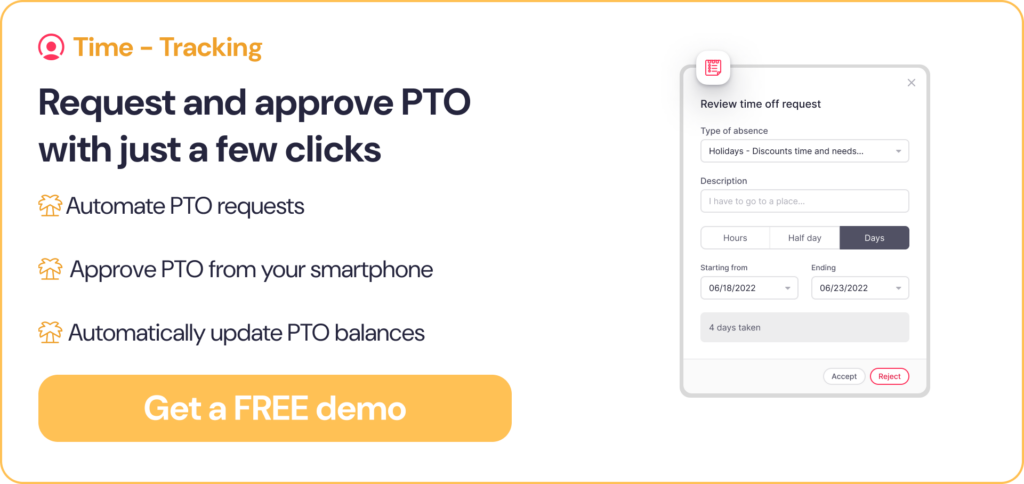Flexible working solutions, such as compressed hours, flexi-time and remote working, are becoming increasingly popular. Since the 2020 global pandemic, many companies re-assessed their working model and how changed how their employees work.
As many companies adopt hybrid or work-from-home models, they are replacing traditional working methods with more modern approaches.
In this article, we’ll look at the alternatives organisations are offering. Including what compressed hours are, how a compressed work schedule works, the benefits of implementing one, and how employee attendance tracking would need to adapt to this way of working.
- What are Compressed Hours?
- Pros and Cons of a Compressed Work Schedule
- Flexible Working Examples UK
- How to Calculate Compressed Hours
- How to Calculate Bank Holiday Entitlement for a Compressed Workweek
- Time and Attendance Tracking
What are Compressed Hours?
Employees who work compressed hours work their total contracted hours over fewer days. Compressed working hours are just one type of what is known as flexible working practices. Under UK law, an employee is entitled to request flexible working practices. In December 2022, the government confirmed they will introduce legislation giving people the right to request flexible work from day one (dependent on certain factors). These changes came into effect in 2024.
Examples
Instead of working a full work-week, an employee may choose to work four 10-hour days (Monday to Thursday) and then take a three-day weekend. This is known as a 4/10 schedule or a 4-day workweek, and it is the most common arrangement for compressed hours.
Employees can work an extra hour from Monday to Thursday to finish early on Fridays. They can also take a shorter lunch break to leave work earlier. It’s about giving employees the responsibility and flexibility to manage their own time, provided it doesn’t affect their work.
Pros and Cons of a Compressed Work Schedule
Before you decide if introducing a flexible working arrangement policy in your business might be beneficial, there are a few pros and cons that you need to consider. Although there are many advantages to having fewer working days each week, your policy must be well-managed to avoid attendance issues that could impact productivity.
Advantages of Compressed Hours
There are multiple advantages for implementing a compress hours work model. Of course it depends on your specific workplace, however, the pros make it worth looking into.
For employers
- Extended hours: This is especially beneficial for customer service departments and companies in the service industry, hospitality, or healthcare. Since employees work longer hours each day, you can stagger their shifts to maintain adequate coverage. This approach ensures consistent staffing throughout the day.
- Invest in professional development: This could free up your employee’s schedule and allow those interested in pursuing professional development to study or take a class. As they will have more free time and flexibility to enhance their skills, meaning advanced skills to offer your company.
- Increase productivity: In the case of a 4/10 compressed schedule, employees spend less time commuting and overall have more free time to recharge, improving their work-life balance. This results in improved employee well-being and engagement, as well as increased commitment and productivity.
- Attractive company brand: Offering three-day weekends could do wonders for your employer brand, making you more likely to attract and retain top talent.
- Higher attendance rates: As employees have more flexibility, they are less likely to take time off from work to run errands, attend medical appointments or resolve personal matters, resulting in fewer absences.
- Reduced costs: Research from the University of Reading’s Henley Business School suggested that switching to compressed workweeks could save UK businesses an estimated £104bn every year. They believe this is because it increases staff productivity and physical and mental health, resulting in fewer sick days.
Disadvantages of Compressed Hours
As an employer, you might have concerns about the effect compressed hours could have on your business, including the following:
- Disruption in current workflow: Restructuring the working week might cause disruption in the office, especially if you don’t have a clear system for keeping track of when your teams will be working.
- Scheduling issues: If you have no system for tracking and monitoring your employees’ time, it could also result in understaffing issues. This includes potentially having staff unsupervised if there are schedule conflicts between managers. However, this could easily be fixed by automating and digitalizing your employees’ schedules to reduce errors.
- Increased physical demand: If not well-managed, longer working hours might result in fatigue and decreased productivity. As working more hours in a day can be more physically and mentally demanding for employees.
- Employers should address this by implementing a wellness programme that provides employees with the necessary tools to manage stress effectively.
- Non-compliance: If you are not tracking the compressed hours your employees work, you risk failing to comply with UK employment law, including overtime laws and laws on the working week.
Flexible Working Examples UK
- The UK recruitment company MRL Consulting moved to a four-day working week in 2019. The aim was to improve wellness and reduce stress. The company saw an increase in productivity and a reduced number of absences. Staff retention rose to 95%, productivity increased by 25% and short-term absences were reduced by 40%.
- Another UK company, Synergy Vision formalised its 4-day working week after a trial showed staff to be happier and more productive. Synergy have reported no adverse impacts since employees started working compressed hours. In addition, employee surveys demonstrated that employees were happier (27% more employees reported happiness levels of 7 or more).
- The public relations company Radioactive PR implemented the four-day working week in 2018. This was part of a wider initiative to build a culture of trust where employees manage their own time. The only condition was that clients continued to receive the results they expected. Employees report a better work-life balance and turnover has increased by 70%.
- WorkWise UK, a non-profit that advocates “smarter” working practices, has also adopted this approach. According to CEO Phil Flaxton: “Technology is shifting the need for traditional nine-to-five work patterns – replaced by a more flexible approach. This will continue as more of us embrace new, smarter ways of working”.
How to Calculate Compressed Hours
When an employee works a compressed work schedule, they are still working full-time hours. The key difference is that employees can adjust how they distribute their hours throughout the week. This flexibility allows them to work fewer days.
For this reason, the employee working compressed working hours must work out their annual leave using hours rather than days.
How to Calculate Bank Holiday Entitlement for a Compressed Workweek
When an employee works compressed hours, the company calculates their annual leave in hours rather than days.
If a bank holiday falls on one of their scheduled workdays, the company deducts the corresponding hours from their annual leave entitlement. Discover the bank holidays in the UK here.
Time and Attendance Tracking
If you implement a flexible working policy, tracking time and attendance will be a crucial factor. Ensuring accurate records helps maintain productivity and compliance. Employee time and attendance are legal requirements of the Working Time Regulations (1998).
You may already have a system for monitoring the hours that your employees work. However, if your employees adopt a flexible working schedule then you will need a transparent system that you can rely on.
Our time tracking can help you manage your employees’ schedules and track their working hours to ensure compliance with all legal requirements. There are many benefits of implementing this working model into your business, especially as a source of retaining your top talent.



